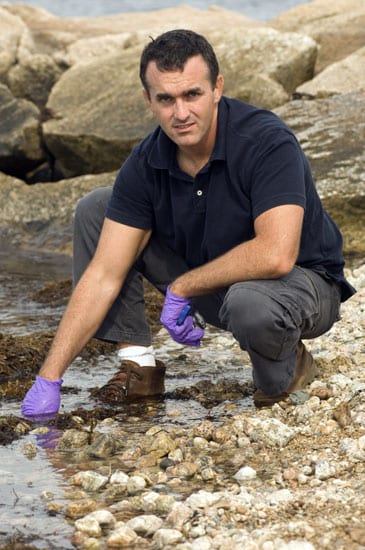News Releases
Linking Climate Change Across Time Scales
What do month-to-month changes in temperature have to do with century-to-century changes in temperature? At first it might seem like not much. But in a report published in this week’s…
Read MoreA Picture is Worth a Thousand Words…
ImageSource, a new database of images and illustrations representing years of ocean exploration, is now available to the public. Combining a number of visual libraries and collections at the Institution,…
Read MoreWalrus Calves Stranded by Melting Sea Ice
Scientists have reported an unprecedented number of unaccompanied and possibly abandoned walrus calves in the Arctic Ocean, where melting sea ice may be forcing mothers to abandon their pups as…
Read MoreNew Maps Provide Clues to the Historic 2005 Red Tide Outbreak in New England And Hints for 2006
Scientists at the Woods Hole Oceanographic Institution (WHOI) have completed two extensive survey and mapping efforts to better understand why the 2005 New England red tide was so severe and…
Read MoreMarine CSI: Solving the Mysteries of Marine Mammal Strandings
A 12-foot Cuviers beaked whale (Ziphius cavirostris) found stranded on a beach south of Boston in early April is a rare event in New England, although strandings of pilot whales…
Read MoreLive From the Tropics: New Underwater Observatory Monitors Marine Ecosystem off Panama
A new cabled observatory off the island of Canales de Tierra is the latest in a series of underwater laboratories that can monitor marine ecosystems over long periods and transmit…
Read MoreGliding from Greenland to Spain
In May, the Spray glider will attempt to set yet another record when it will begin the roughly 2,500-mile journey from the tip of Greenland to the coast of Spain…
Read MoreThe Last Voyage?
The Deep Submergence Vehicle (DSV) Alvin finished a five-month overhaul in Woods Hole in early April and returned to sea April 19 aboard support vessel Atlantis for what may be…
Read MoreStamina in the Stream
Despite a ship strike that caused significant damage and harsh winter conditions, a surface buoy and mooring have survived a record six months in the Gulf Stream, recording both atmospheric…
Read MoreJenkins Named Head of National Ocean Sciences Carbon Dating Lab
Physicist Bill Jenkins, a senior scientist and 32-year veteran of the WHOI Department of Marine Chemistry and Geochemistry, has been named the new director of the National Ocean Sciences Accelerator…
Read MoreWHOI Scientist Selected As Leopold Leadership Fellow
Woods Hole Oceanographic Institution (WHOI) scientist Christopher Reddy has been chosen one of 18 academic environmental scientists from throughout the U.S. and Canada as a 2006 Leopold Leadership Fellow. The…
Read MoreDaily Dispatches from Hawaii
Several hundred WHOI scientists and engineers will join the nearly 3,500 researchers at Ocean Sciences 2006, jointly sponsored by the American Geophysical Union, American Society of Limnology and Oceanography, The…
Read MoreHow Does Iron Get Into the Ocean?
Marine scientists and engineers have created a new tool to track an essential ingredient on which life in the oceans depends: iron. The instrument, deployed on a buoy off Bermuda…
Read MoreA View from Down Under
While it may be summer in the southern hemisphere, it is still very cold on Antarctica, where WHOI researchers are conducting a number of projects on and around the continent. …
Read MoreNew Instrumentation May Help Scientists Understand Earthquake Mechanics
Hundreds of earthquakes occur every day around the world, most of them underneath the oceans, while the vast majority of instruments used to record earthquakes are on land. As a…
Read MoreMonitoring Baleen Whales with Autonomous Underwater Vehicles
Like robots of the deep, autonomous underwater vehicles, or AUVs, are growing in number and use in the oceans to perform scientific missions ranging from monitoring climate change to mapping…
Read MoreDeep Submergence Vehicle Alvin Overhaul in Action
Watch the latest progress on the overhaul of the three-person submersible Alvin at http://alvincam.whoi.edu/view/view.shtml. The sub has been ashore in Woods Hole, Massachusetts undergoing overhaul since November and will be…
Read MoreWarmer than a Hot Tub: Atlantic Ocean Temperatures Much Higher in the Past
Scientists have found evidence that tropical Atlantic Ocean temperatures may have once reached 107°F (42°C)about 25°F (14°C) higher than ocean temperatures today and warmer than a hot tub. The surprisingly…
Read MoreNew Sonar Method Offers Way to Assess Health of Squid Fisheries
California?s $30-million-a-year squid fishery has quadrupled in the past decade, but until now there has been no way to assess the continuing viability of squid stocks. A new sonar technique offers a window onto next year?s potential squid population.
Read MoreAutonomous Underwater Vehicle Maps Ancient Greek Shipwreck
Additional contact: Denise Brehm MIT News Office 617-253-2704 brehm@mit.edu After lying hidden for millennia off the coast of Greece, a sunken 4th century B.C. merchant ship and its cargo have…
Read MoreMagnetic Misfits: South Seeking Bacteria in the Northern Hemisphere
Magnetotactic bacteria contain chains of magnetic iron minerals that allow them to orient in the earth’s magnetic field much like living compass needles. These bacteria have long been observed to…
Read MoreWho Goes to Sea Wishing for Bad Weather?
Some physical oceanographers do, even if it is in January in the North Atlantic. Woods Hole Oceanographic Institution (WHOI) scientists will spend two weeks this month working south of the…
Read MoreChanges in the Antarctic Ecosystem: Salps versus Krill
WHOI biologists will travel to Antarctica in mid-February to study salps⎯transparent, gelatinous, planktonic animals that generate massive populations containing individuals 10 centimeters (about four inches) long and colonial chains many…
Read MoreClues in a Crater: From India to the Surface of Mars
Researchers from WHOI, Harvard, MIT and Princeton will conduct the second part of an intensive field and laboratory study this month at Lonar Crater in Maharashtra, India, looking for clues…
Read More
